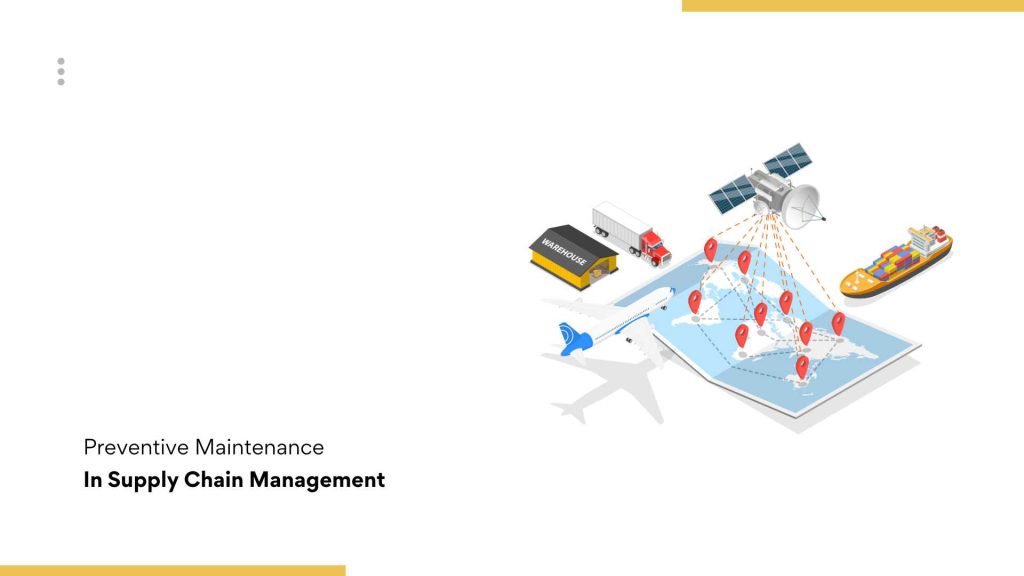Supply chains require carefully coordinating many moving parts to keep their gears running smoothly. Maintenance management is a crucial component of this orchestration because it helps keep all parts of the supply chain running smoothly.
Imagine an orchestra playing a complex symphony: if one instrument goes out of tune, it throws off the entire group and disrupts the performance. Similarly, if one part of a supply chain breaks down or experiences delays, it can affect the whole system.
Understanding Preventive Maintenance
At its core, preventive maintenance involves proactive measures to prevent equipment failures or breakdowns. Instead of waiting for assets to malfunction, organizations schedule routine inspections, repairs, and upkeep to ensure smooth operational continuity.
The Supply Chain Impact
In supply chain management, the importance of preventive maintenance cannot be overstated. Every link in the chain, from the manufacturing process to distribution, hinges on the seamless functioning of machinery, vehicles, and other critical assets. Here’s why it matters:
Downtime Mitigation:
Unplanned downtime due to equipment failure can wreak havoc on schedules, causing delays in production or shipment. Preventive maintenance helps mitigate this risk by addressing issues before they escalate.
Cost Efficiency:
Reactive maintenance is often more expensive due to emergency repairs, rush demands for spare parts, and the loss of productivity during downtime. Although an investment, preventive care saves costs in the long run by reducing the frequency and severity of breakdowns.
Enhanced Safety:
Regular maintenance ensures that equipment operates optimally, reducing the chances of accidents or malfunctions that could endanger employees or products within the supply chain.
Optimized Operations:
When machinery and assets are well-maintained, they tend to perform better, leading to increased efficiency, higher output, and improved product quality.
Preventive Maintenance Operations
Maintenance in Transportation:
In transportation, preventive maintenance stands as the sentinel guarding against logistical nightmares. Regular checks and servicing of vehicles, including trucks, ships, or planes, ensure smooth operations and timely deliveries and minimize the risk of unexpected breakdowns that could disrupt supply chain flows.
Maintenance in Production:
Within production facilities, preventive maintenance is the silent hero, optimizing the heartbeat of manufacturing. Scheduled inspections and upkeep of machinery and assembly lines reduce downtime and enhance productivity by ensuring that equipment operates at peak efficiency, contributing to the timely production of goods.
Storage and Warehouse Maintenance:
Warehouses and storage facilities serve as crucial nodes in the supply chain, and preventive maintenance here is the guardian of inventory integrity. Regular checks for climate control systems, shelving, and handling equipment safeguard the stored goods and streamline processes, enabling efficient retrieval and distribution.
Customer Delivery Maintenance:
The final portion of the supply chain journey, customer delivery, hinges on the reliability of vehicles and systems. Proactive maintenance of delivery vehicles, last-mile logistics infrastructure, and tracking systems ensures that products reach customers on time and in pristine condition, fostering satisfaction and loyalty.
Implementation Challenges and Solutions
Implementing a preventive maintenance program isn’t without its challenges. Companies may face resource allocation, scheduling conflicts, and resistance to change. However, several strategies can help overcome these hurdles:
Data-Driven Approach: Leveraging technology for predictive analytics can identify potential failure points, allowing for more targeted maintenance efforts.
Training and Collaboration: Educating employees about the importance of preventive maintenance fosters a culture of accountability and teamwork.
Outsourcing Partnerships: Collaborating with third-party service providers specialized in maintenance can alleviate the burden on internal resources while ensuring expert care for critical assets.
Future Outlook
As technology continues to develop, the role of preventive maintenance in supply chain management is poised for transformation. Advancements in IoT (Internet of Things) sensors, AI-powered predictive care, and automation will revolutionize maintenance, making it even more proactive and efficient.
Conclusion
Acumatica Cloud ERP presents a transformative solution for optimizing supply chain management. By seamlessly integrating various processes, from procurement to inventory control and distribution, Acumatica streamlines operations, enhances visibility, and fosters collaboration across the supply chain.
Its robust features empower businesses to make data-driven decisions, improve forecasting accuracy, and respond agilely to market changes.
Acumatica Cloud ERP catalyzes efficiency, cost-effectiveness, and heightened performance within the supply chain ecosystem through real-time insights and scalable functionalities.

Vijay comes with a vast experience in ERP and enterprise solutions space with about 20 years of experience in various packaged application like Acumatica, SAP, Orion, Salesforce.com, SugarCRM and, SalesLogix.

